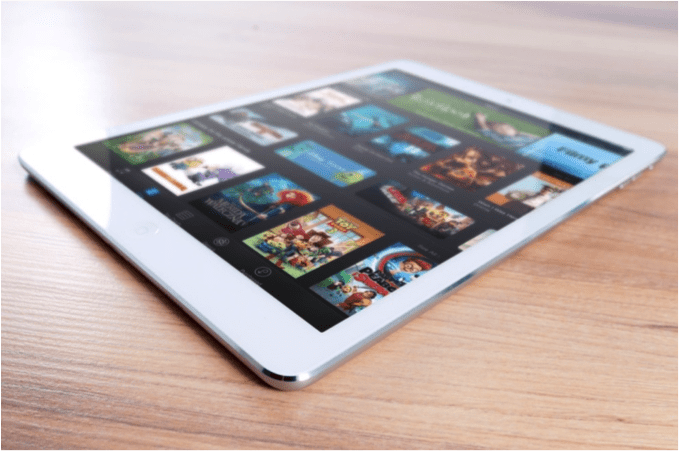Flat Website Design: A Fad or the Web’s New Look?
Like the hottest fashion fads, website design trends come and go. The days when carousel sliders and sidebars ruled the Web are long gone. In the last few years, flat websites have taken over.
The reason? Modern Internet users are savvier than their predecessors. They know how to navigate a webpage, so there’s no need to use shading and textures to guide their eyes.
Flat designs also have faster load times and a clean, professional look. According to Bluehost, these sites offer perfect scalability for mobile devices. These attributes not only enhance UX but also improve a site’s PageRank.
But is flat design a bottle-rocket fad that will burn out as fast as it took off? Or will it be the Web’s new wayfarer – a trend that remains popular through the decades and inspires the next generation of developers?
Let’s take a look at the pros and cons of flat website design:
Pros of Flat Website Design
Just because your website embodies realism or skeuomorphism doesn’t necessarily mean you need a top-to-bottom redesign. Yes, the hardest-hitting companies on the Web are starting to transition toward flat websites, but you really don’t need to start from scratch unless it will have a positive impact on your business goals.
That said, flat websites do offer a long list of benefits:
Predictable Design Elements
A flat user interface is more efficient and predictable – at least for experienced Web users. Instead of scrolling through various menus, flat websites lay icons and buttons side by side in a predictable fashion. Designers have also started using icons instead of textual links – for example, using intuitive graphics to link to service pages.
Mobile-Friendly Interface
No website will be successful without a mobile-friendly interface. More than 50 percent of Internet activity in the United States takes place on mobile devices. What’s more, Google’s “Mobilegeddon” update in 2015 gave mobile-friendly sites a dramatic edge in search results.
Flat websites are perfect for mobile devices due to their fast load times and attractive scalability. The clean layout of buttons creates an uncluttered look, which helps mobile users navigate. Also, the lack of unnecessary bells and whistles means there are fewer features to make responsive.
Great for Businesses
Flat website designs are modern and uncluttered – conveying a professional look. But businesses are attracted to more than the aesthetics: The fast load times, mobile-responsive interface and predictable layout improves UX, which influences both PageRank and conversion rates. Also, flat websites tend to cost less because they do not require as much custom coding.
Cons of Flat Website Design
Despite the advantages of flat website design, there are plenty of critics who point out its drawbacks and weaknesses. Here are a few reasons why some developers aren’t hopping on the bandwagon:
Confusing for Some Internet Users
This is the most common complaint about flat website designs. Although modern Internet users have more digital savvy than their parents, some visitors still have trouble navigating flat websites.
Flat designs lack the common elements that signify click-ability – for example, underlined links and shadows around buttons. In the absence of these clues, some users find flat sites to be inefficient and complicated.
It’s Not Easy to Create a Color Palette for a Flat Website
As Website Magazine points out, the lack of click-ability signifiers and other skeuomorphism elements means designers must use colors carefully and productively to help users navigate flat websites. Instead of creating a visual hierarchy with four or fewer hues, developers may need to build a palate with six or seven different colors – all of which must be used collectively to create an aesthetic look and efficient UX.
Should I Use Flat Website Design?
Entrepreneur reminds business owners that jumping on the “going flat” bandwagon isn’t always a wise investment. If the transition won’t support your business goals, then stay the course.
If you’re building a site from scratch, then a flat design is certainly worth considering. Faster load times, cheaper design costs, a modern and professional look – the trend has undeniable advantages.
But remember: Flat designs are not always easy to navigate, and you should never sacrifice usability for aesthetics.
According to Nielsen Norman Group, Web designers have recently begun tweaking the flat design to guide users’ eyes and help them identify clickable elements. These developers are combining the simplicity and layout of a flat website with shadows, layers and highlights to improve UX.
The bottom line: Flat website design has both aesthetic and functional benefits. The trend is already inspiring adaptations and catching the eye of Microsoft, Apple and other digital shot-callers.
Whether you want to build a website for your business, personal use or a charitable cause, a flat interface is certainly worth considering.
source http://www.smartinsights.com/user-experience/website-design/flat-website-design-stay-breaking-pros-cons/

 Thanks to Steve Caddick for sharing their advice and opinions in this post.Steve Caddick is the owner of
Thanks to Steve Caddick for sharing their advice and opinions in this post.Steve Caddick is the owner of
No comments:
Post a Comment